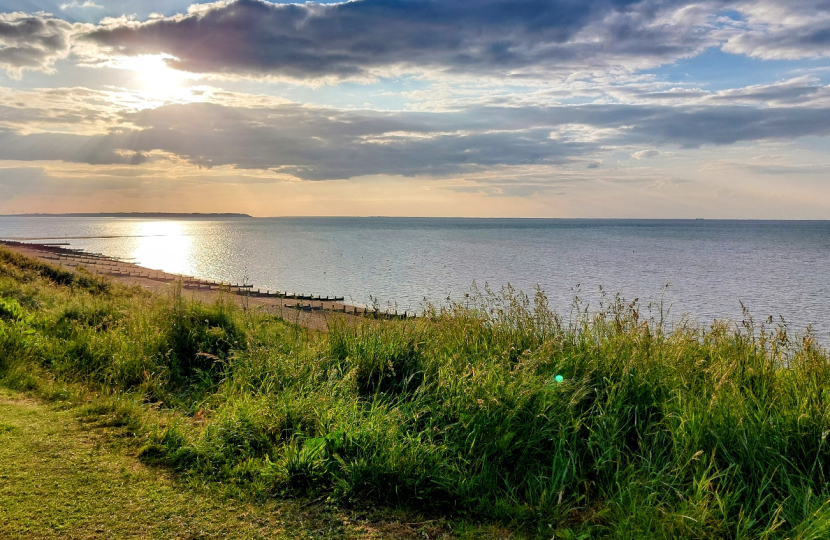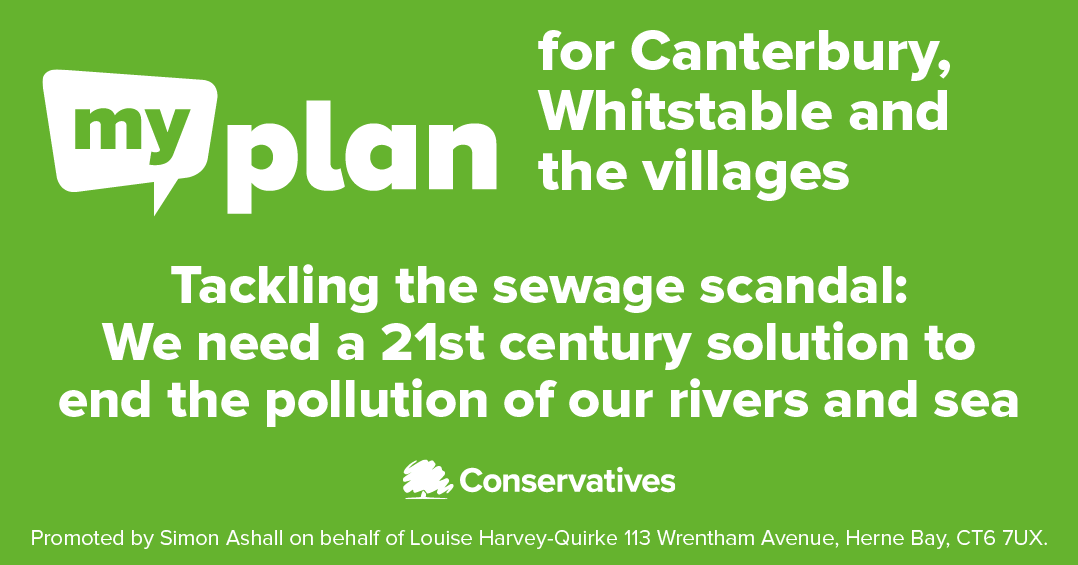
In 2024, it's nothing short of outrageous that we have a sewage system in place that is designed to discharge waste into our rivers and seas when there is seemingly little more than a trickle of rain. It's impossible to be sure, along the coast at Seasalter, Whitstable, Tankerton and Swalecliffe, whether the sea is safe enough to swim in.
Not only have our beaches been blighted by the water companies struggling to move into the modern world at the sort of speed those of us living here want them to, but so have our businesses. Not just those fishing and harvesting shellfish, but all who rely on people coming to the seaside and spending money locally. I will take the anger and frustrations I've heard locally to the highest level and fight for improvements - not decades from now, but much more immediately, so we can be all be confident our sewage is being treated properly and we won't risk our health by enjoying a swim.

Our coastline here has been at the centre of national and international press coverage, thanks to the tireless work of volunteers who have given up so much of their time to highlight the issue – and hold Southern Water to account over all of their plans and proposals to improve the situation. There have been some positive moves: all combined sewer overflows in England now being monitored at least gives a better idea of what is happening, but the data often lags and there are questions over its reliability. And, on a fundamental level, knowing when sewage enters the water still means it is entering the water...which has to end.
The division of the coastline into “bathing beaches” and “all the rest” is also unhelpful, as there are many reasons why people might want to enjoy the sea away from the formal bathing areas. It also means that formal water quality testing focuses on a very small selection of areas and. as they are "spot tests," only show the picture at that precise moment.
I and others had hoped the trial of a real-time water quality monitoring buoy off Tankerton would be the starting point on allowing more precise, immediate information to be available but, for whatever reason, this development of this project from Southern Water has been painfully slow. Given our area is being used as one of the company's "Pathfinder" projects, to trial new methods to - ultimately - stop sewage getting into the sea, they need to be pushed into bringing about genuinely positive change.
What we currently have feels as though there is a disconnect between what residents want and what Southern Water will deliver. The new "short outfall" pipe being constructed off the waste water treatment works at Swalecliffe perhaps highlights that well. To quote the third paragraph of the company's project page:
"This will mean any releases of stormwater from this outfall – which only happen rarely, during and after heavy rainfall as a last resort when the storm tanks are full, so nearby homes and businesses are not flooded – are further out to sea and further from local beaches and bathing waters."
The focus needs to switch - and water quality is too important to waste time on ideological arguments, frankly whatever solves the problem is the right solution - so that we are no longer talking about sewage being dumped "further out to sea" but rather "being treated properly and not polluting our precious environment". If it wasn't so serious, it would be comedic to hear about millions of pounds being spent on sewage flowing that little bit further into the sea. But this is no joke.
The ultimate goal has to be stopping sewage getting into the water. A detailed, achievable, realistic timetable is needed to show how we are going to reach
that point – with targets along the way to ensure progress is made. Until we get to that point, much more information needs to be provided so we can all make informed choices about whether we want to enter the water or not.




